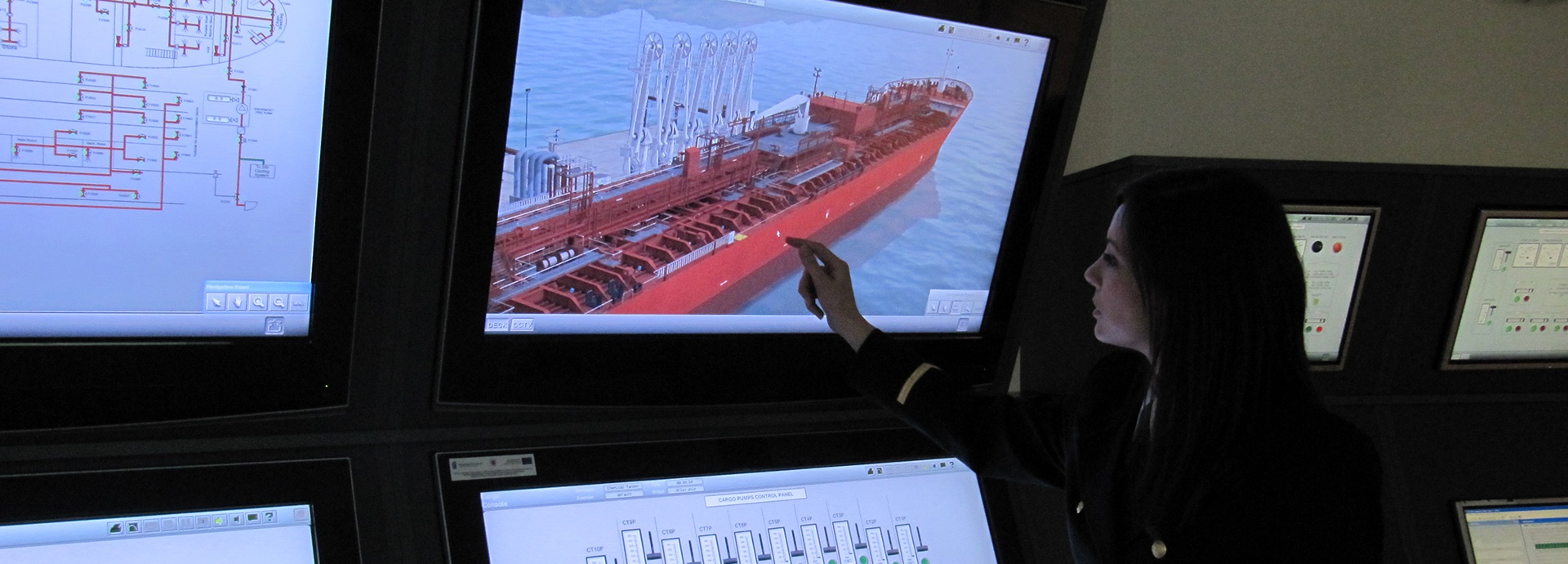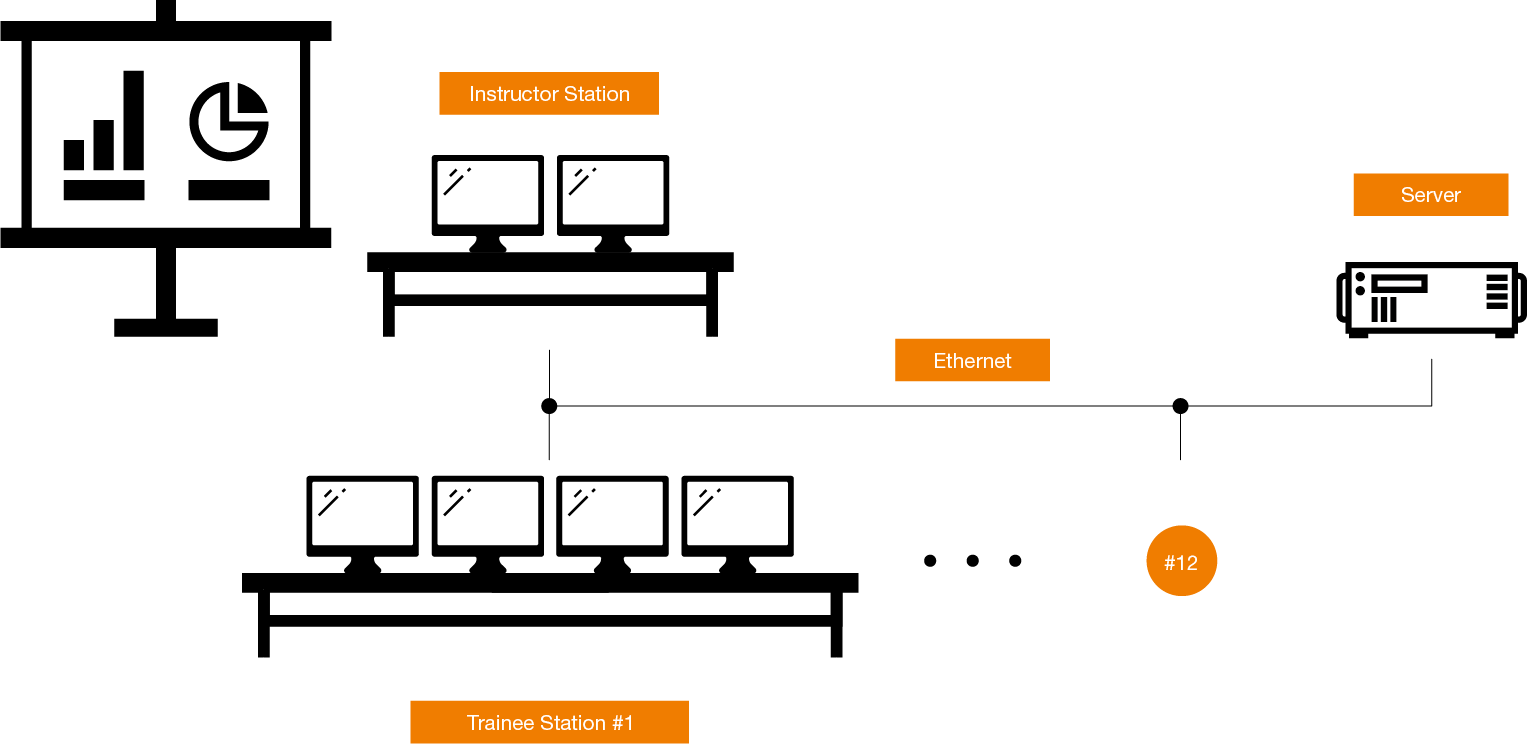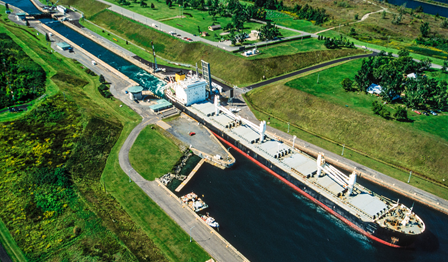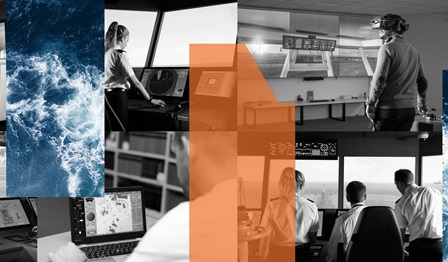

Wärtsilä Liquid cargo handling simulators
Liquid Cargo Handling Simulators (LCHS) are designed to train and certify crew members of liquid cargo tankers, gas carriers and terminals, as well as other staff responsible for the safe handling of cargo and the operation of auxiliary equipment.
Wärtsilä Voyage’s LCHS provide an exact, detailed copy of vessel and terminal systems and their compartments. This simulator type is an ideal solution for training centres, academies, government authorities, shipping companies, coastal centres and crewing agencies.
Key benefits
- Loading control system: Tank volumes, hull strength, ship stability, loading, trim, and strength in the course of the ship loading/unloading operation in the simulator are calculated using a Load Calculator System(LCS) module. This software is required by STCW 2010 recommendation B 1/12, i 40 (2,3).
- e-Tutor Training Scenarios: Based on IMO Model courses, Wärtsilä Voyage’s automated training and assessment system, e-Tutor, helps trainees learn various operating procedures and emergency responses, auto-assessing their performance and keeping records of their results. It allows the students to practice without close supervision, and the instructor can avoid routine explanations.
- Smart Realities: Interactive walkthrough functionality, available both for Virtual Reality headsets and standard displays, allows familiarisation with the cargo deck arrangement and deck equipment operation of the LCHS models (Crude Oil and LNG Carriers).
- Vast ship model library includes all major gas and oil tankers used worldwide. All simulator models are based on real ship prototypes and replicate systems to a T to provide a detailed layout for trainees to explore.
- Different cargo types can be selected from the simulator databases. Operations are carried out for almost all kinds of cargo.
- Precise mathematical model allows processes to be accelerated to reduce the training time without any deterioration in realism.
- Hyper-realistic graphics user interface provides practical skills in equipment handling. The main tanker units are depicted as 3D objects, showing cross-sections of individual assemblies. Computer animation is used to display current processes.
Key features
Wärtsilä Liquid Cargo Handling Simulators replicate a cargo control room, allowing a comprehensive study of the tanker and terminal layout, including its machinery and systems, according to international standards and requirements:
- General arrangement of the tanker and its systems.
- Maintenance of the tanker systems on the management level.
- Control of vessel ballast system.
- Control of trim, stability and stress.
- Prevention of oil pollution from the ship.
- Proficiency in technological tanker operation.
- Monitor the loading, stowage, securing and unloading of cargoes and their care during the voyage.
- Maintain seaworthiness of the ship, plan and ensure safe loading, stowage, securing, care during the voyage and unloading of cargoes.
- Control of pump and piping systems.
- Operation of ballast and cargo handling system.
- Control trim, stability and stress.
- Resource management.
- Respond to emergencies.
- Take precautions to prevent pollution of the environment.
- Tanker-terminal interaction: cargo transfer systems, shore storage, shore equipment and instrumentation.
- Safely perform and monitor all cargo operations.
Additional information
Wärtsilä Marine. Let's connect.



